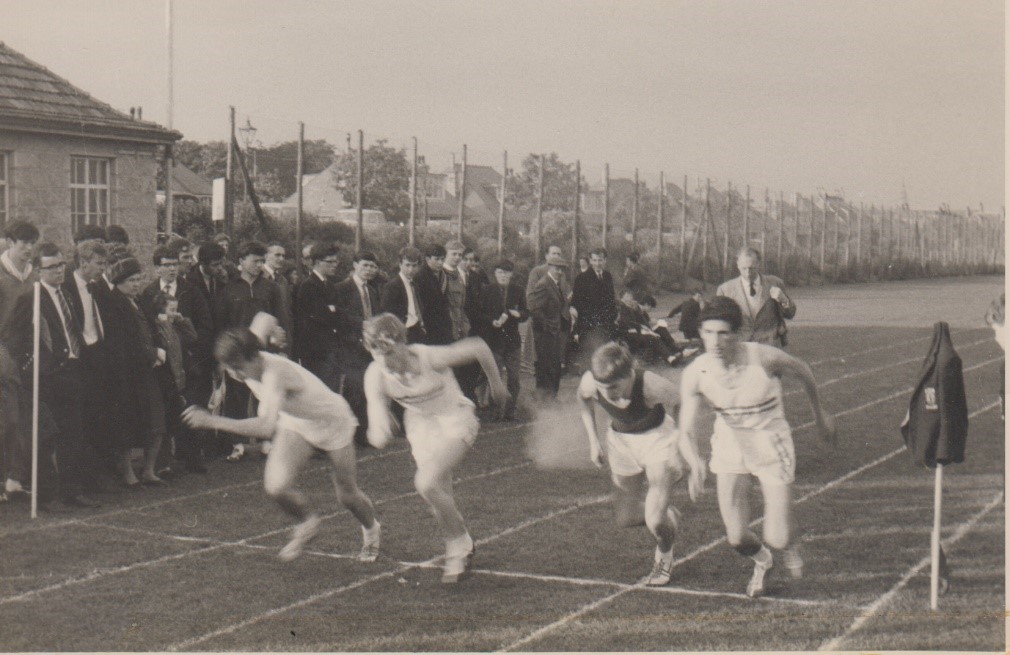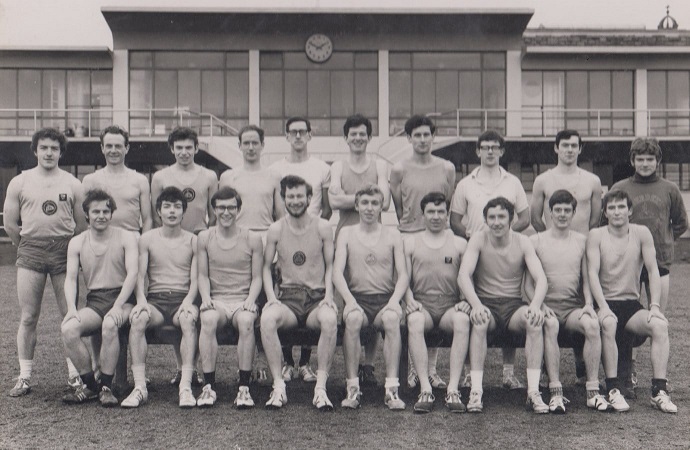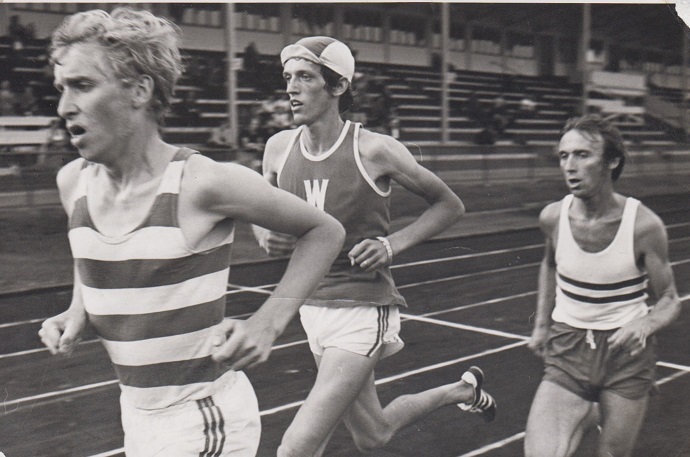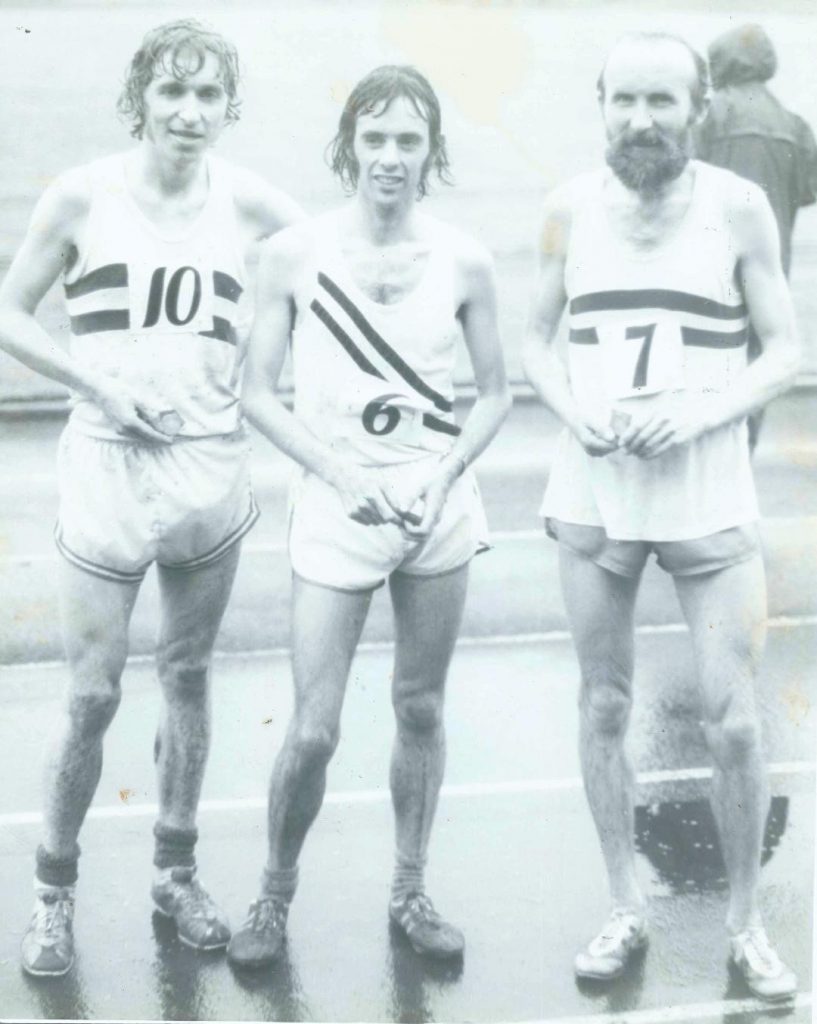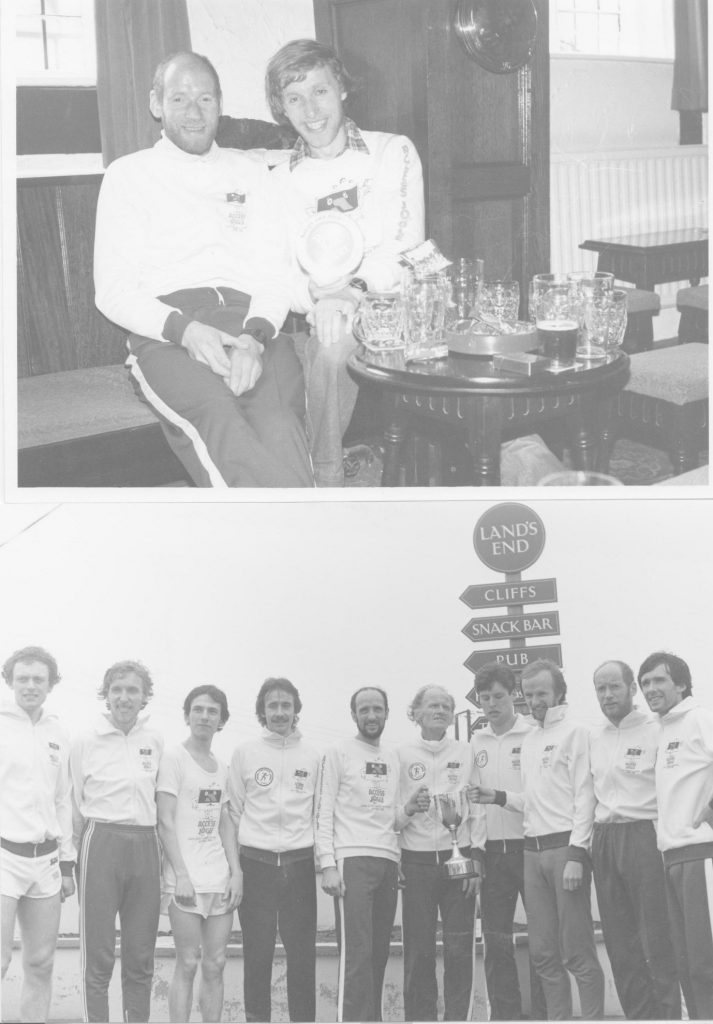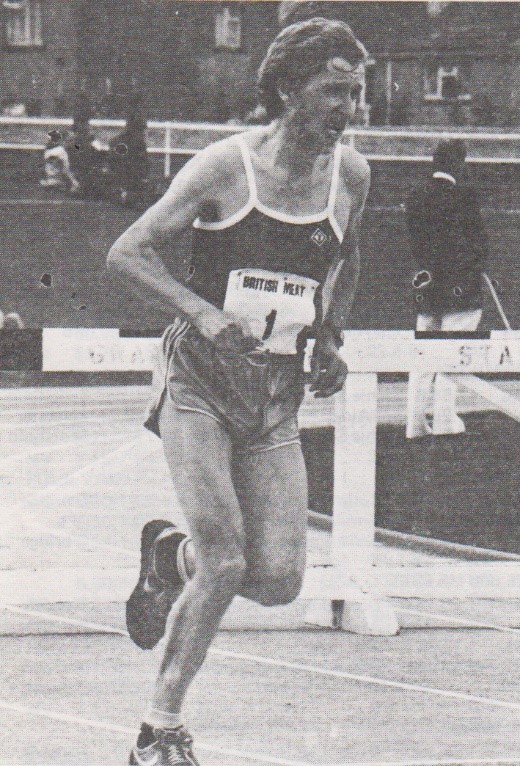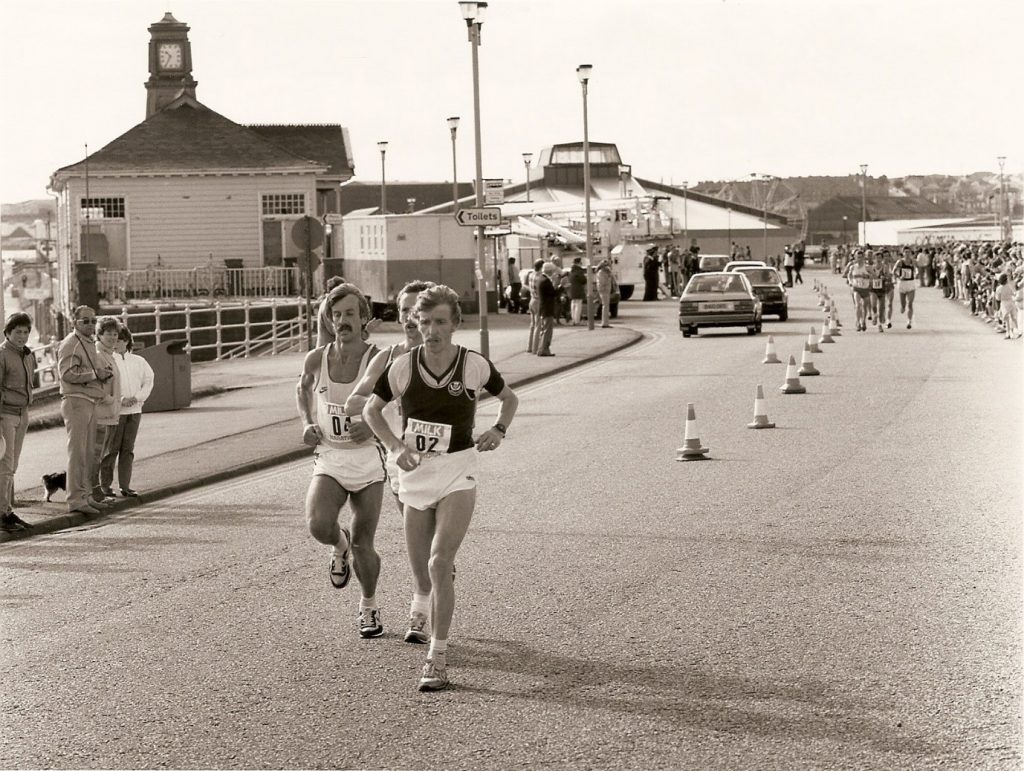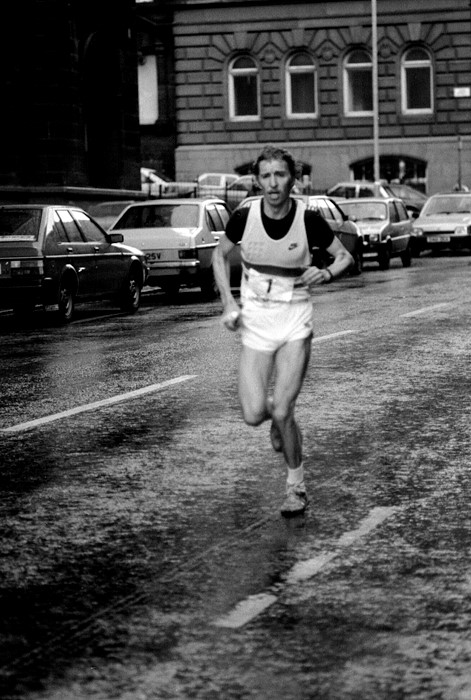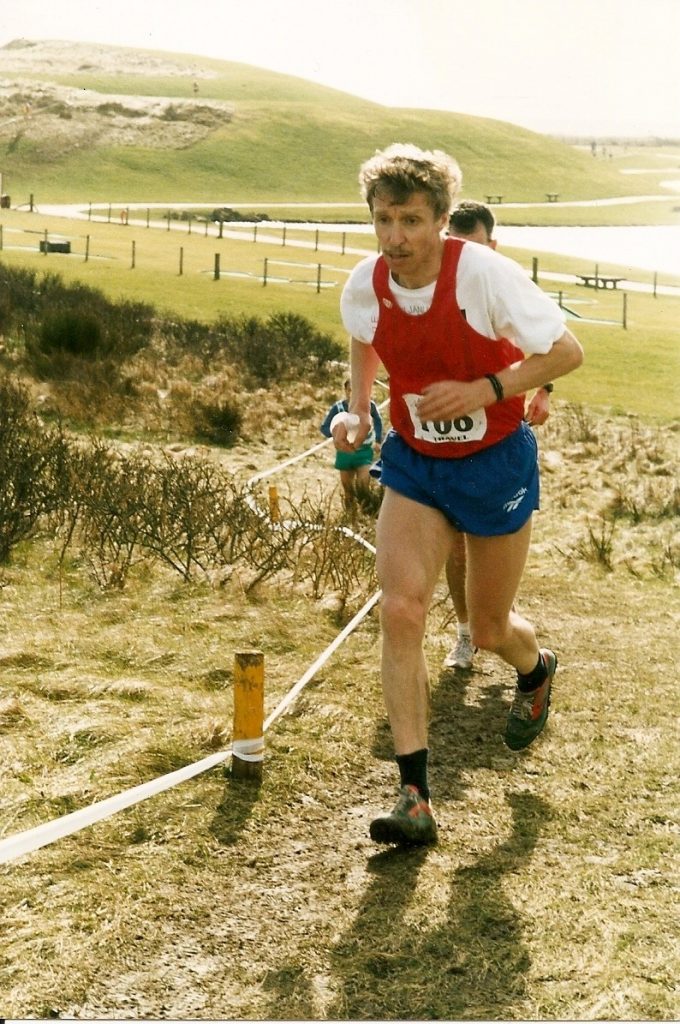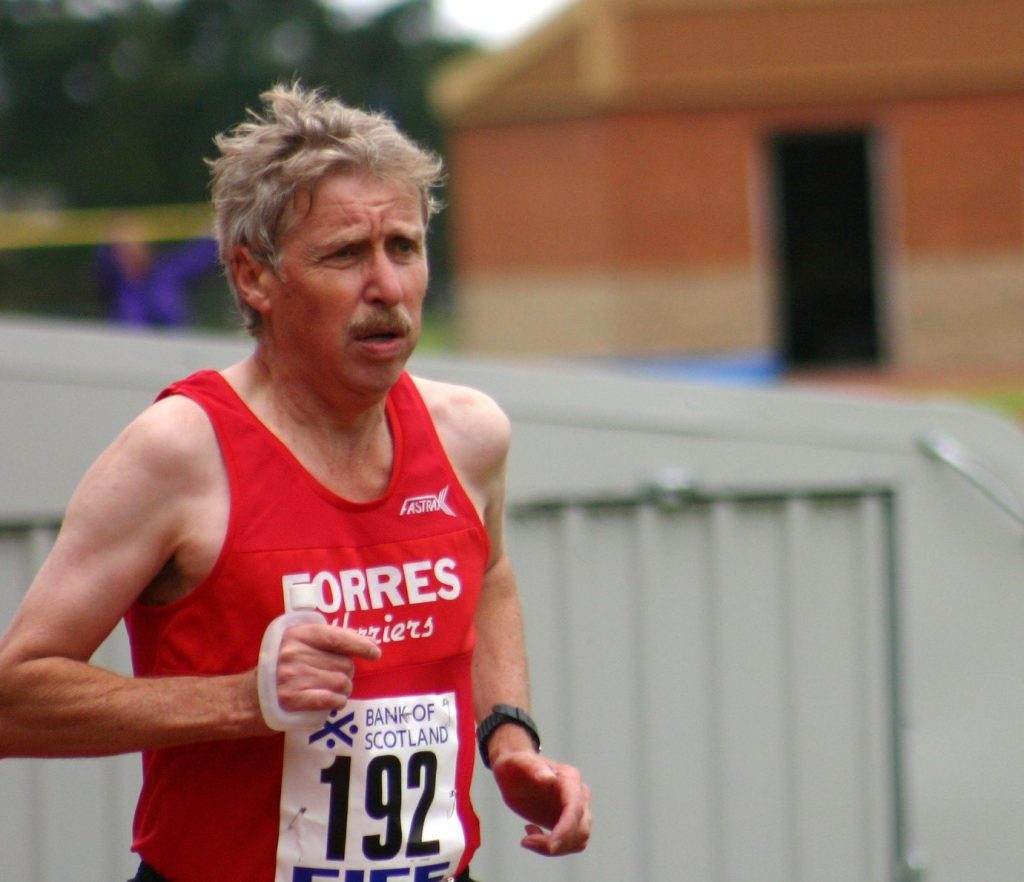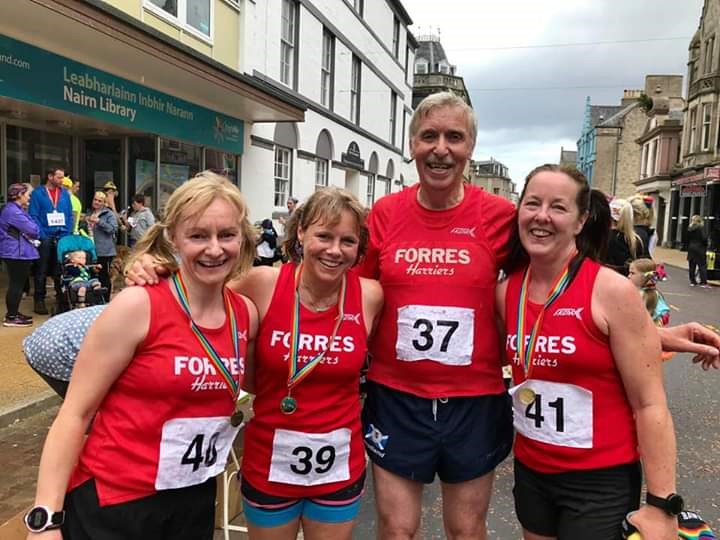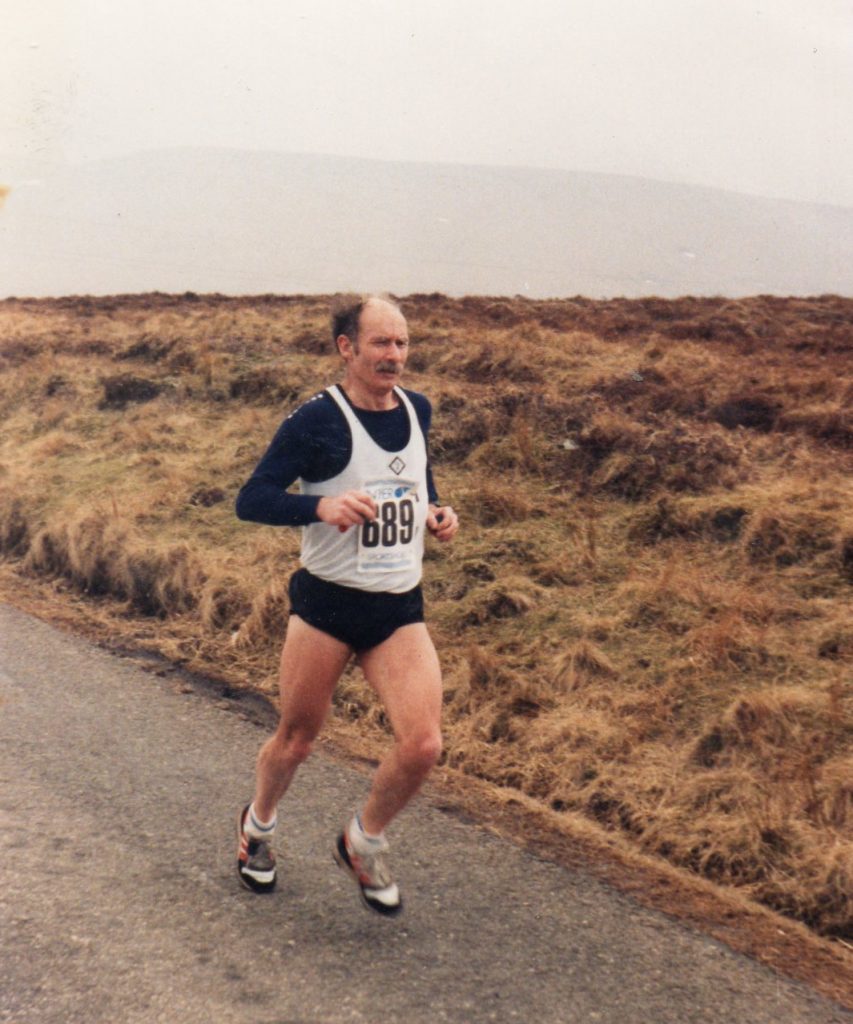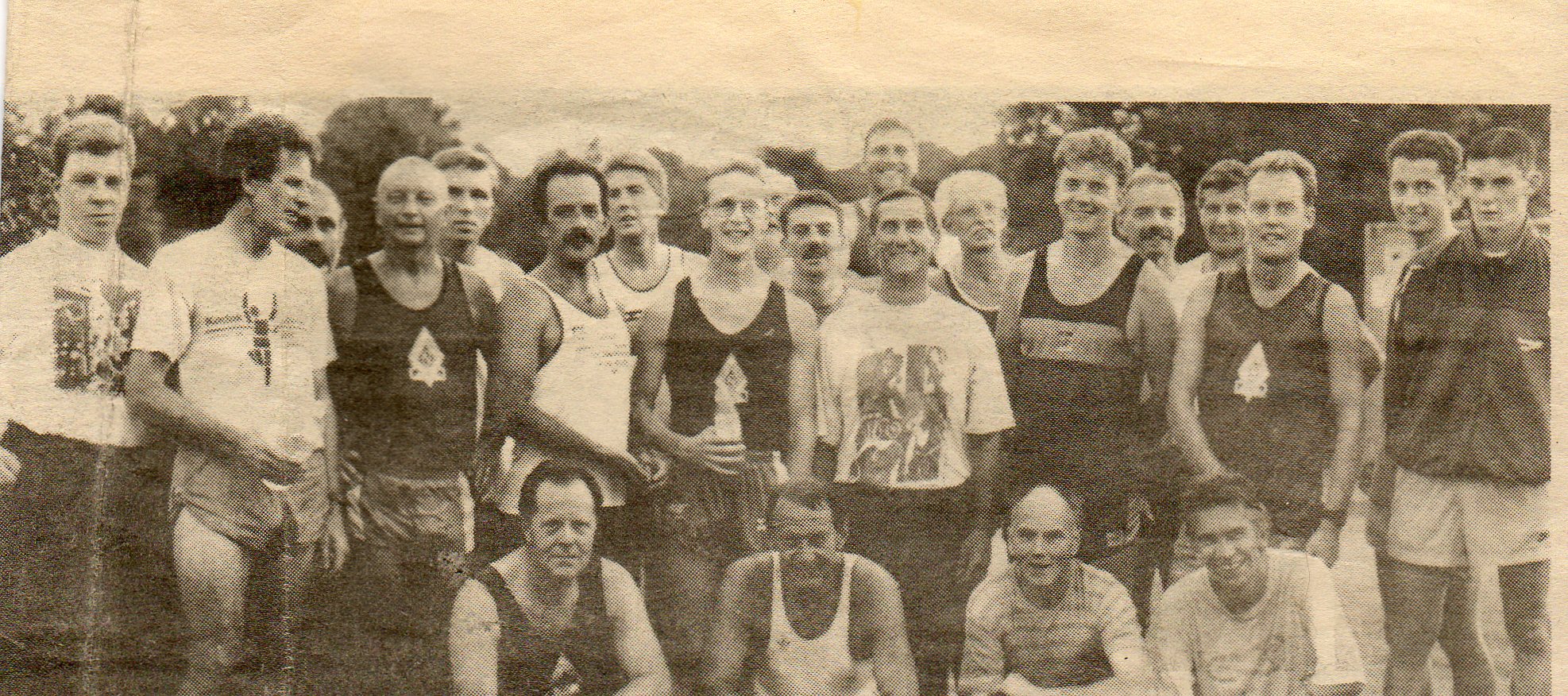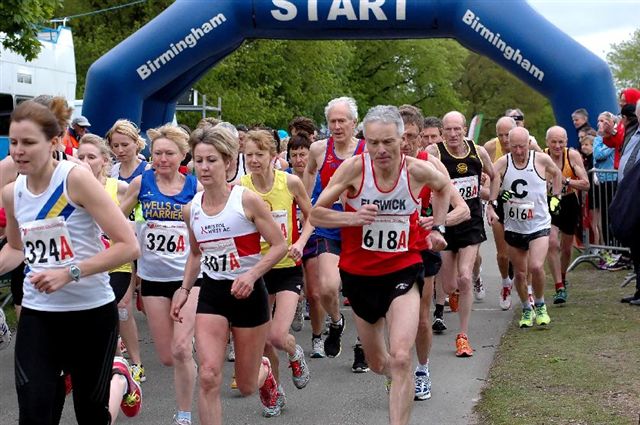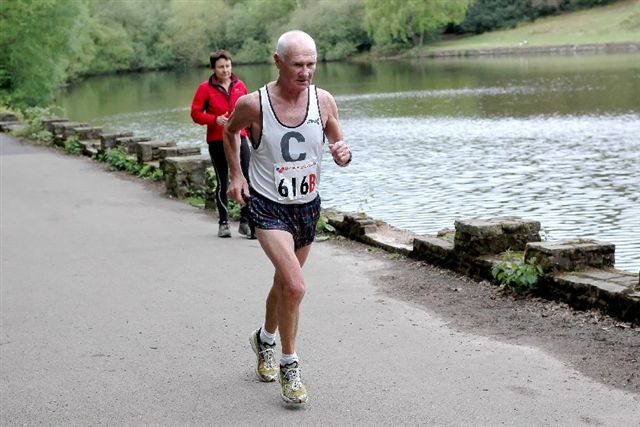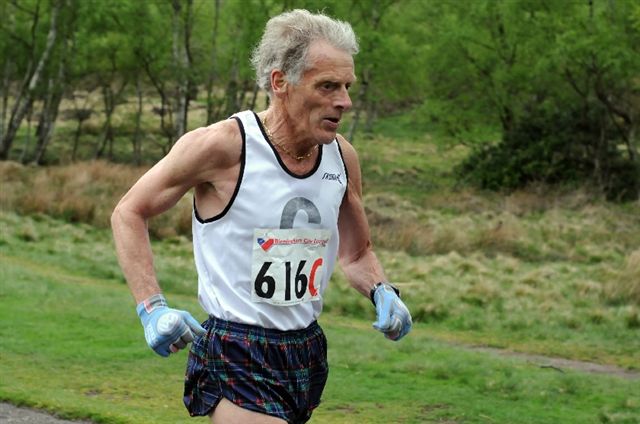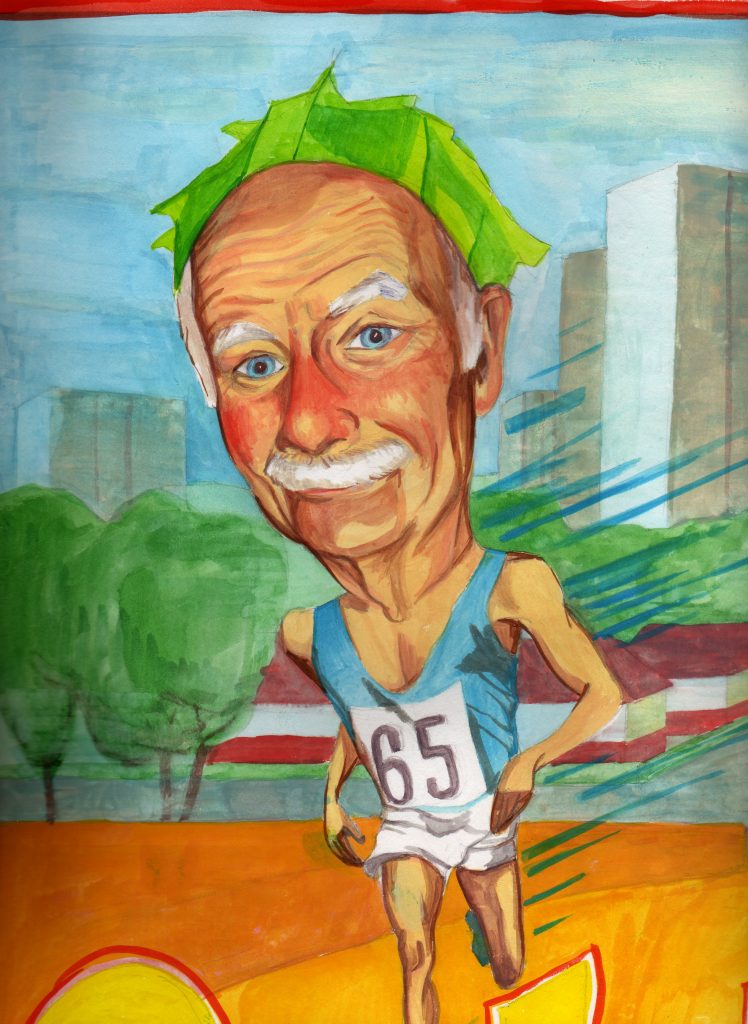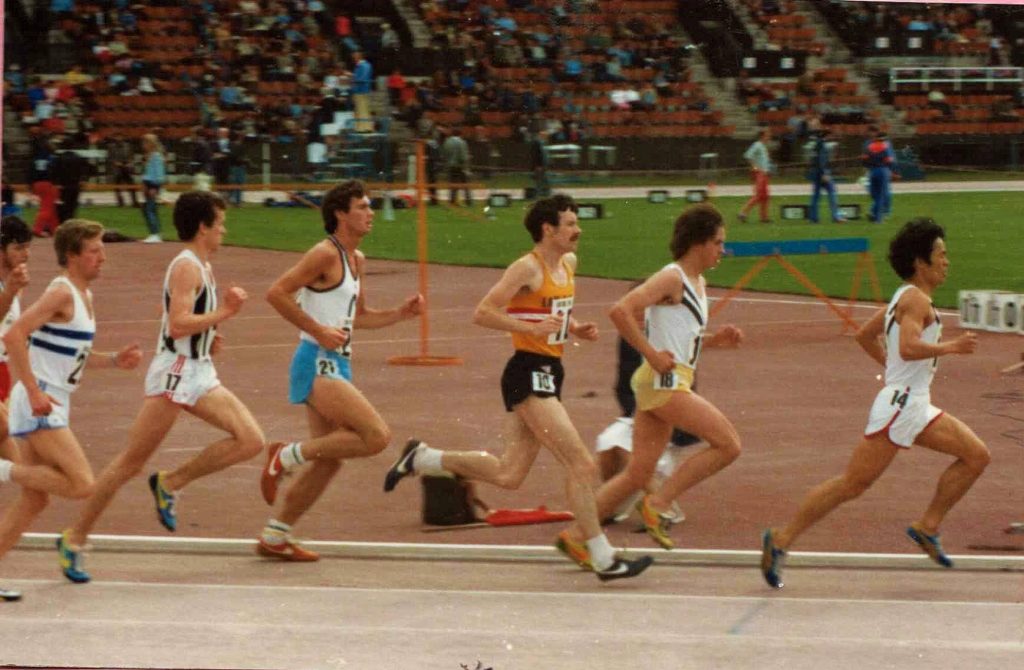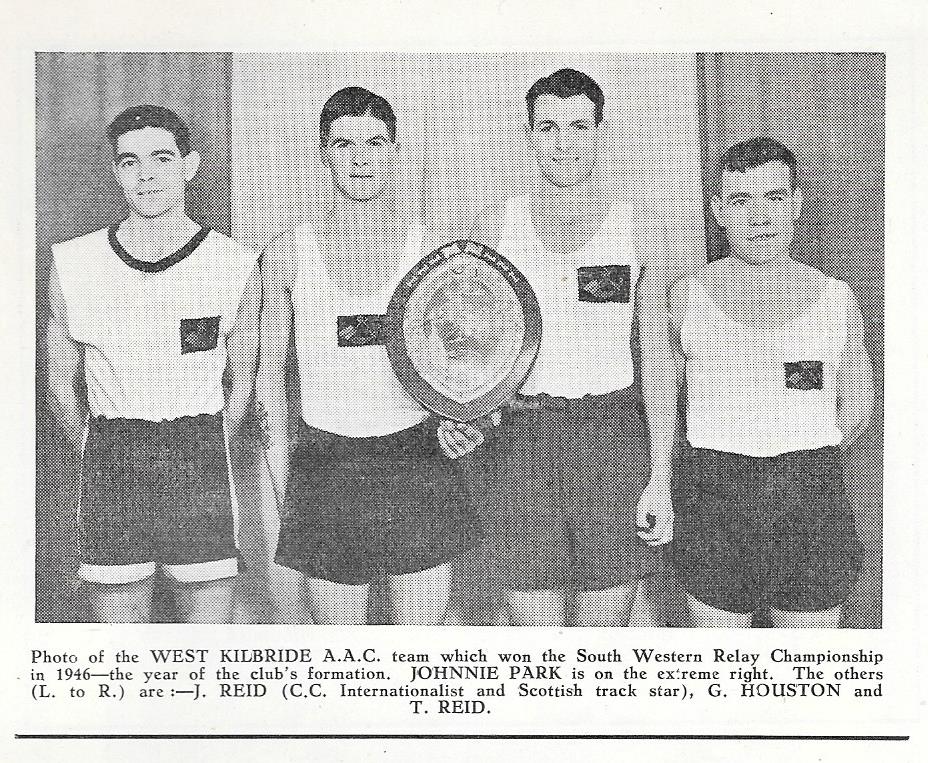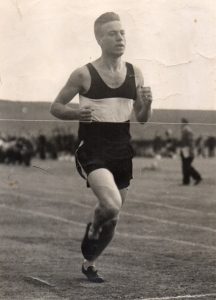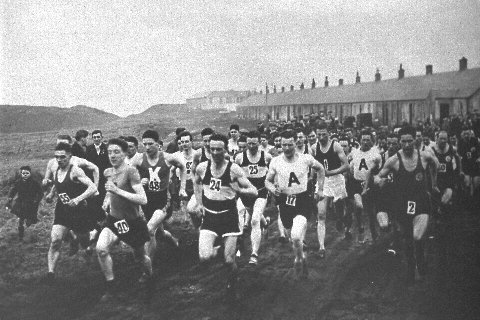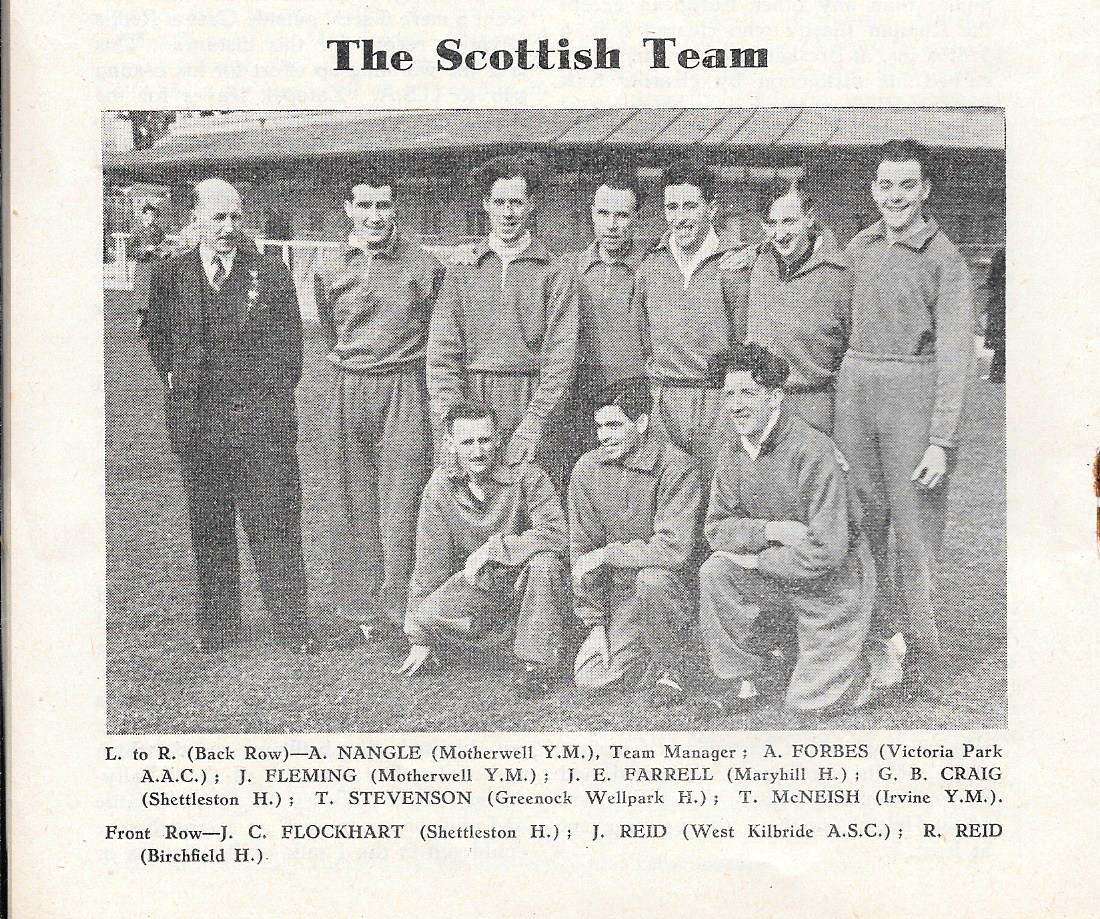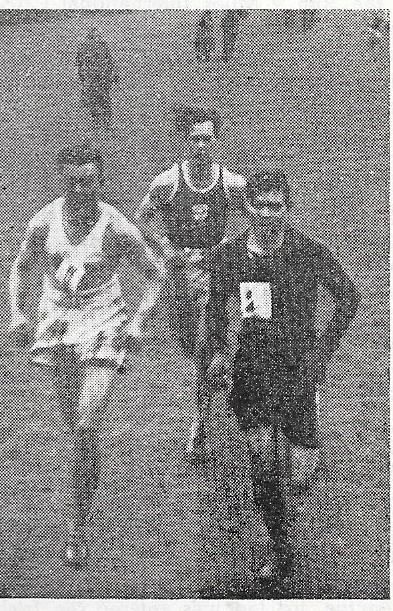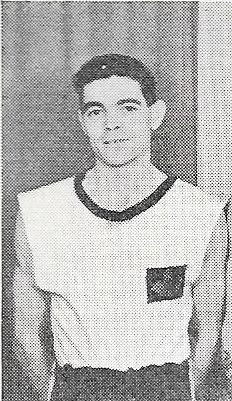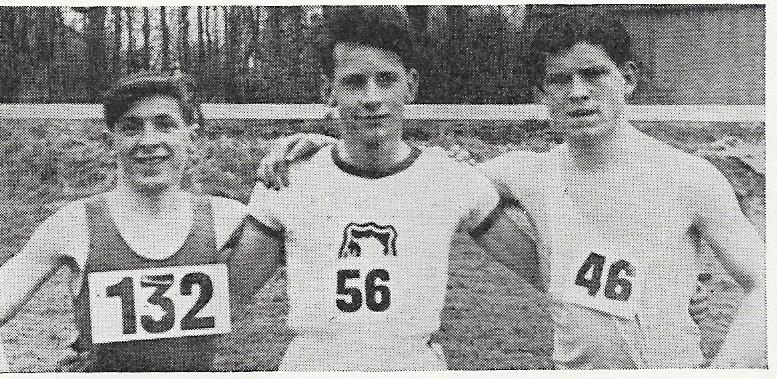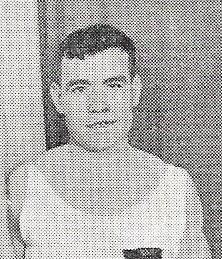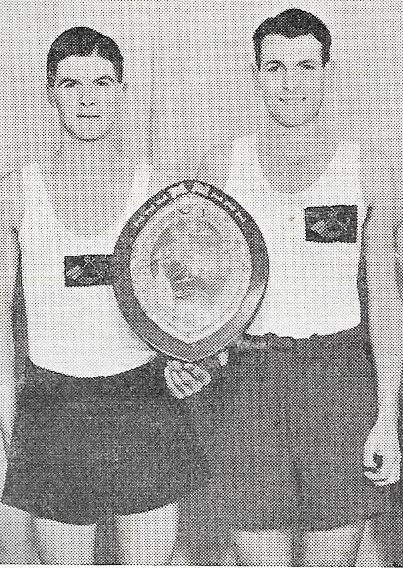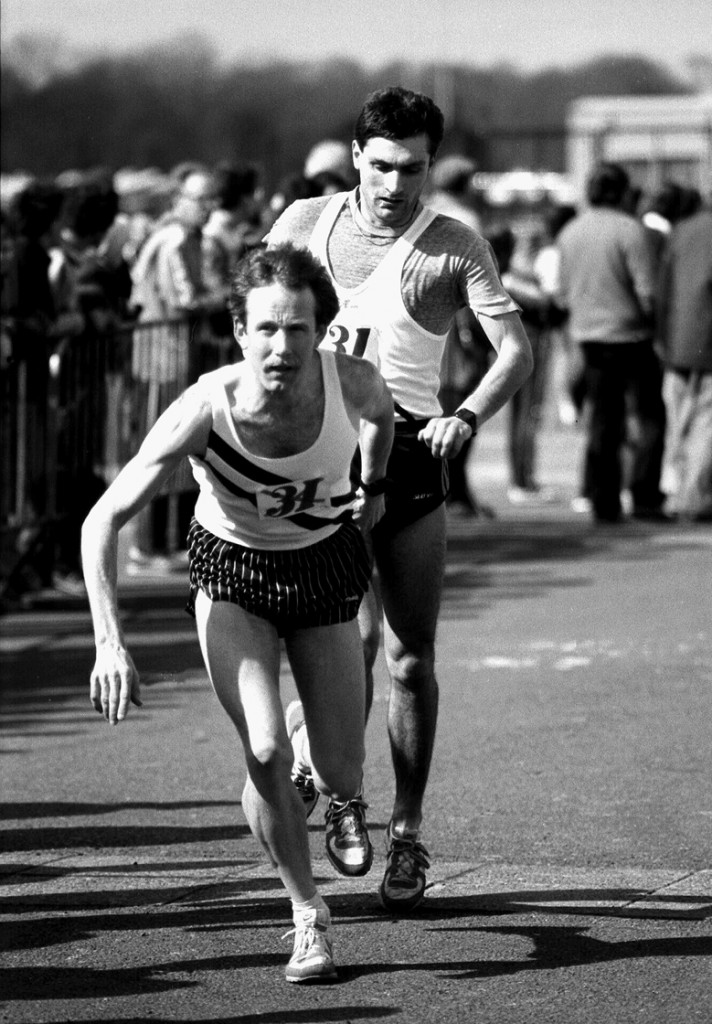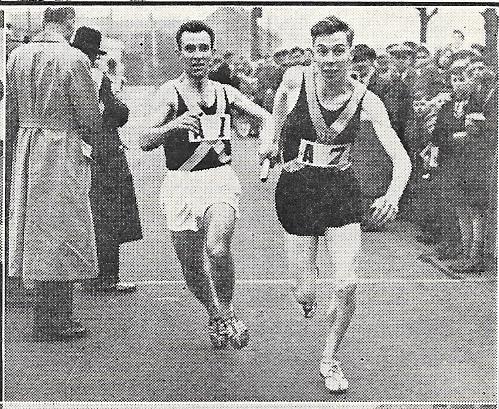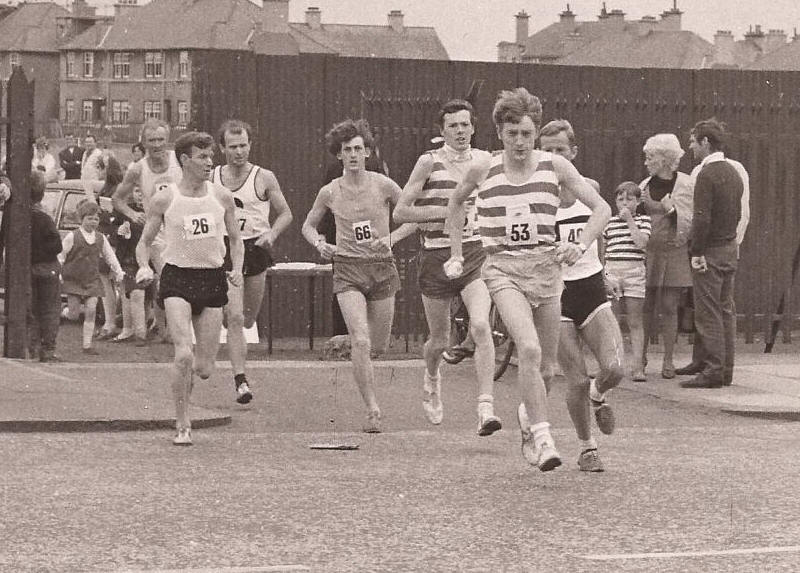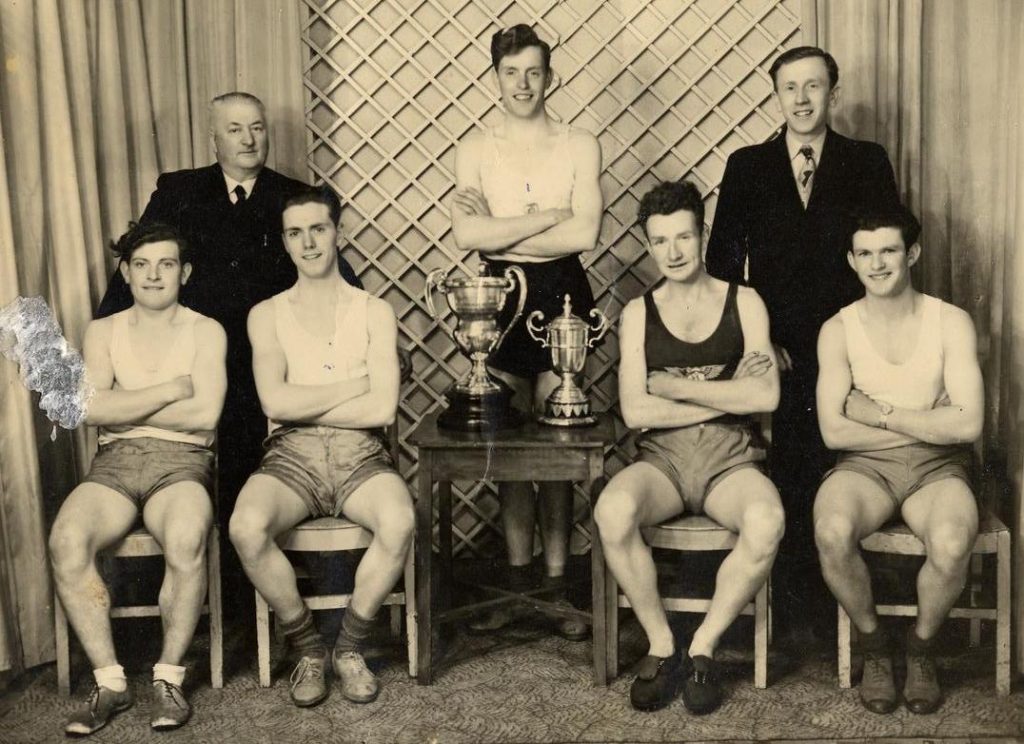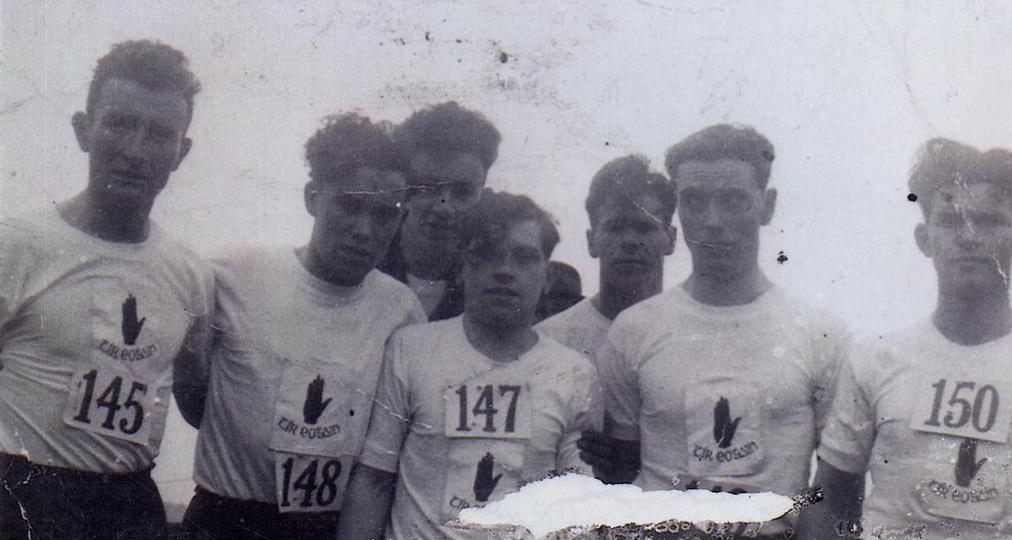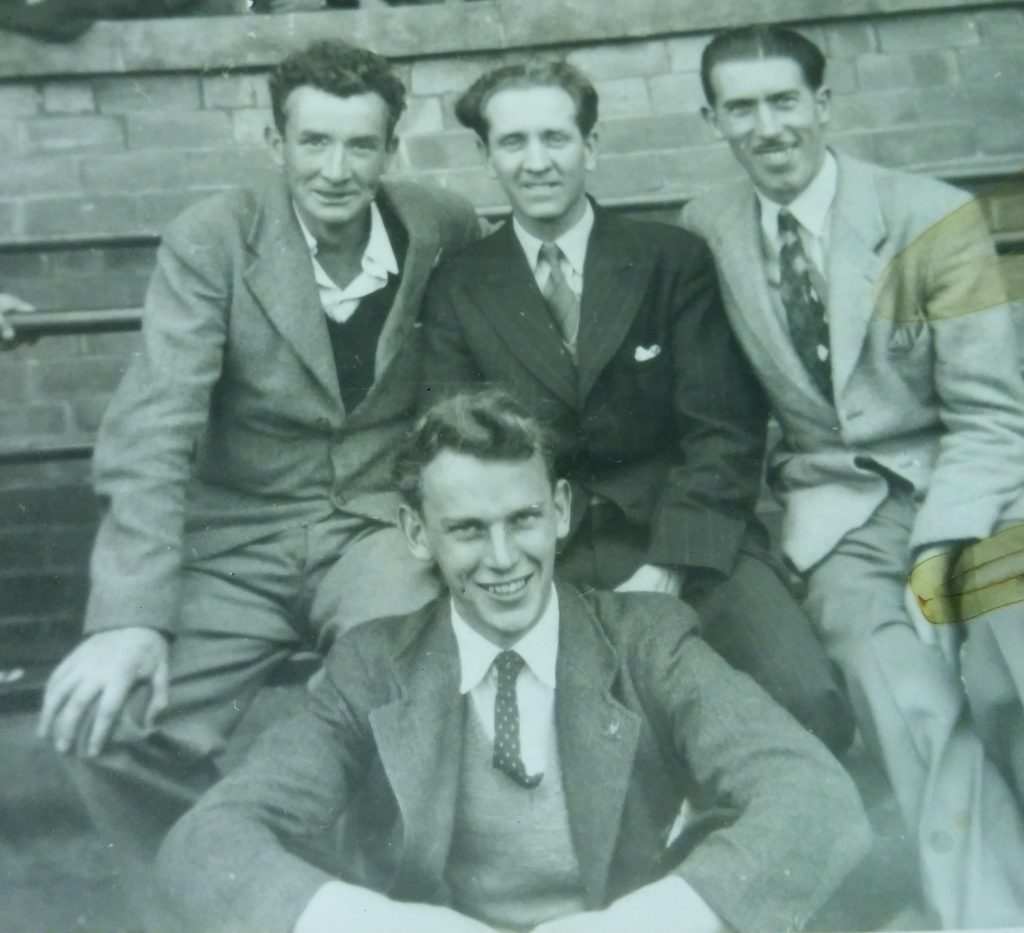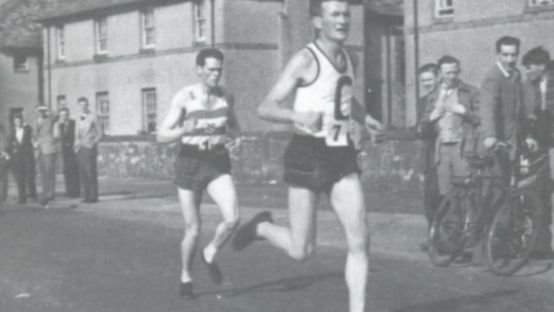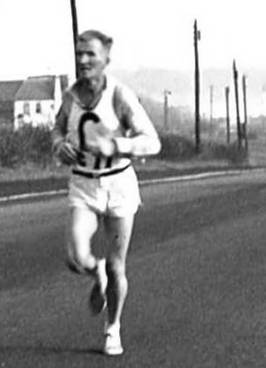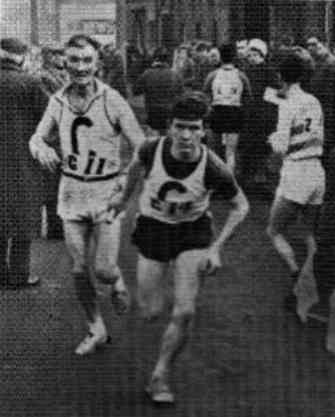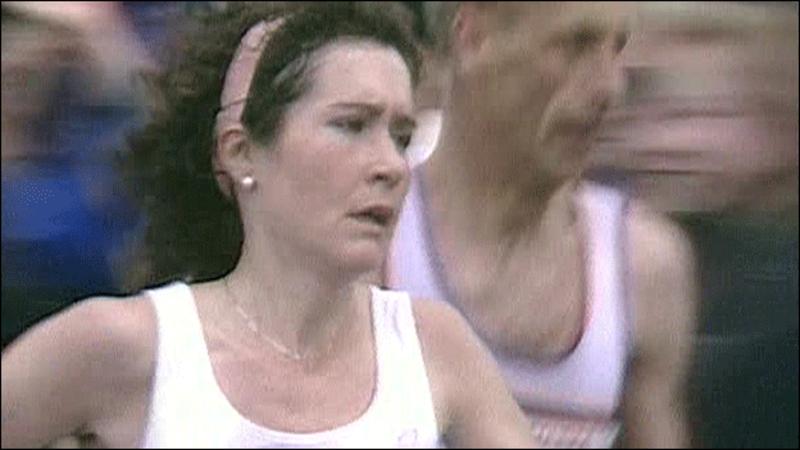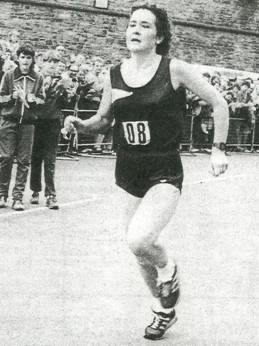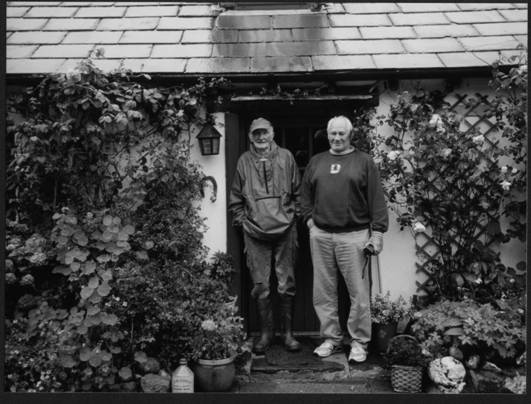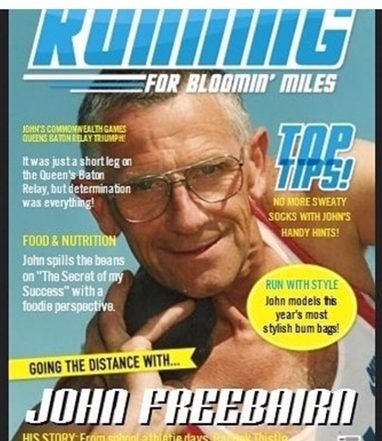
When you look at the various bodies that contributed to the development of amateur athletics in the country, organisations such as the Universities and School FP Clubs are maybe the first that come to mind. But the contribution of the YMCA movement should not be overlooked or minimised. Founded in Anerica in 1844 it believed in ‘muscular Christianity’ and quickly spread all round the world. In Scotland there were many YMCA Harrier Clubs, possibly strongest in the 30’s and 40’s, founded the length and breadth of the country. They had their own national YMCA Cross Country relay and championships as well as a national track and field championships. They all followed the YMCA principles and many young men benefited from them. Some, like the Kirkcaldy branch, were more obviously part of this wider movement. Colin Youngson has been busy and produced this account of the Aberdeen YMCA.
ABERDEEN YMCA HARRIERS
Hunter Watson, the long-time Aberdeen AAC Secretary and Historian, offered relevant information in an AAAC club magazine. “During the two World Wars, the association of local clubs was renamed the North Eastern Harriers Association (NEHA), and the 3-Miles team Road Race usually took place in December. Another regular event was the Round the Town Relay. The YMCA Harriers were often the best team in Aberdeen during the 1930s (others included Aberdeenshire Harriers, Aberdeen University, Shamrock Harriers and Caledonian Harriers). Prominent YM athletes at that time included the Milne twins, Alex and George, who did especially well in five and seven mile races.
The club rented a wooden hut on the south bank of the River Dee, upstream from the Victoria Bridge. This hut belonged to a swimming club. Lighting was by paraffin lamp, and water had to be carried in from the outside and heated over a stove lit by the athletes. A zinc bath was used for sponging after training runs. Track training was carried out on a cinder running track in Linksfield Road. When they all went out for a cross-country or road training run, a ‘Pace-maker’ and a ‘Whip’ were appointed, to make sure that the pack stayed together, until near the end when they were free to race home. (Even when Jim Youngson’s son, marathon runner Colin, ran for Victoria Park AAC in Glasgow in the early 1970s, a similar system operated, with a slow pack going off first, and then the fast pack to chase them round a certain traditional road route.) Then in August 1939 the YM Harriers agreed that the club should go into abeyance until the war situation became clear. War was declared on 1st September; and the club was never formally reconstituted. However, some of its trophies are still competed for by Aberdeen AAC.
An article in the P and J interviews Jimmy Adams, a renowned long-serving SAAA official (and former Scottish High Jump International athlete, who competed in teams with Eric Liddell. (At Christmas 1961, when the article was published, Jimmy was about to retire to Torquay.) Jimmy competed twice for Scotland in the triangular internationals with England and Wales. He tied for the Scottish high jump title one year; and was runner-up on other occasions. Jimmy was in the Scottish team at Stoke-on-Trent in 1923, after Liddell made amateur athletic history by winning three international track events (100, 200, 440) in one afternoon. Arriving at Stoke after competing at the White City, Eric discovered he had left his spikes behind and had to borrow a pair which were to large for him. He made them fit by stuffing the toes with cotton wool. In the quarter mile event, Liddell was fouled at the first bend and was actually forced off the track on to the grass but he recovered lost ground and went on to win a terrific race before collapsing after he breasted the tape. It had been a very hot day it was some time after he had been carried to the dressing room that Liddell recovered consciousness. His tremendous exertions had taken their toll on this great-hearted athlete.
Jimmy Adams considers that to have been Liddell’s finest day in athletics and this was confirmed later by Eric himself when he stayed with Jimmy while on an evangelistic tour of the country. Eric placed his Stoke triumph even above his capture of a gold medal in the 1924 Olympic Games in Paris.)
“In 1914, Jimmy Adams had been serving as a range-finder with the Grand Fleet in Scapa Flow, when it was announced in daily orders that anyone interested in athletics would be allowed ashore to train for the fleet championships.
Jimmy showed versatility in the squadron championships by winning three titles – 220 yards, half-mile and high jump. He went on to take the High Jump title in the Fleet Championships at Rosyth. In 1918, he was chosen to represent the Grand Fleet against the American Fleet.
On being discharged from the Navy he returned to Aberdeen and joined the YMCA Harriers. The club’s headquarters at that time was a wooden hut in the Springfield Road area and the athletes did their training in a nearby field which was also used by grazing horses and cattle.
He still remembers that hut in which there was an old coke stove on which a zinc bath full of water was heated while the members were out training. At the end of each session anything from twelve to twenty members washed themselves in that four-foot zinc bath.
The YMCA club later moved their hut to a site in Linksfield Road where they built a running track and football pitch. After the grass field at Springfield Road, it was sheer heaven to have the use of a proper track.”
(After the start of WW2 in 1939, Jimmy Adams helped to organise athletics contests in which people not called up by the Forces competed against various Service units stationed in the area. The venue of these meetings was the new Linksfield Stadium, situated almost exactly opposite the site of the YM Harriers’ home-made track last used five years earlier in 1935. The 1940 Linksfield Stadium, modernised superbly a few years ago, is now in 2019 the Aberdeen Sports Village, where Scottish Athletics Championships have been held.)
“A new Corporation housing scheme, however, forced the club to change quarters again in 1935, this time to a hut owned by the Dee Swimming Club near the Victoria Bridge. The zinc bath was still with them and, on occasion, they filled it with ice from the Dee.
When he first joined YM Harriers, Jimmy engaged in road running and cross-country but later he cut them out and concentrated on the high jump.
His first big athletics meeting outside Aberdeen was the Rangers Sports in 1921 and he took first prize in the high jump. Gaining confidence from this success he then undertook a series of trips to compete at meetings all over the country, visiting such places as Dundee, Glasgow, Edinburgh, Manchester, Sheffield and London.
There was no such word as ‘shamateurism’ in those days. Practically every weekend during the athletics season he left Aberdeen on Friday night and returned home on Sunday morning – paying all the travelling expenses from his own pocket. He gave up competition in 1927 and turned his attention to the administrative side – with YMCA until 1939, and after the war, Jimmy was instrumental in the founding of Aberdeen AAC in the 1950s.”
“Jimmy’s thirty-odd years as an athletics official produced many memorable occasions, but for him the highlight came in February 1958, when he helped to organise the Aberdeen to Edinburgh run in connection with the cities’ anti-TB campaign. A team of athletes from Aberdeen and Dundee carried a torch and scroll from the Lord Provost of Aberdeen to his counterpart in Edinburgh, completing their assignment in a non-stop 150 mile night and day relay run.
Such a project required a tremendous amount of administrative planning, but, thanks to the co-operation of runners and officials, the twenty-one-hour schedule worked out perfectly.
Jimmy will never forget the sight of the runners moving along Princes Street, Edinburgh, under a police escort, to hand over the scroll to the capital’s civic head exactly on time.
Nor will he forget the remark made to him at the time by a prominent official. “I cannot believe that these boys, having been on the road since last night, can come down here looking like a regiment of Guards. They look so spic and span. They are a credit to Aberdeen.
Jimmy was prouder of these few minutes than of anything in his athletics career, knowing that it was a triumph of co-operation between athletes and officials.”
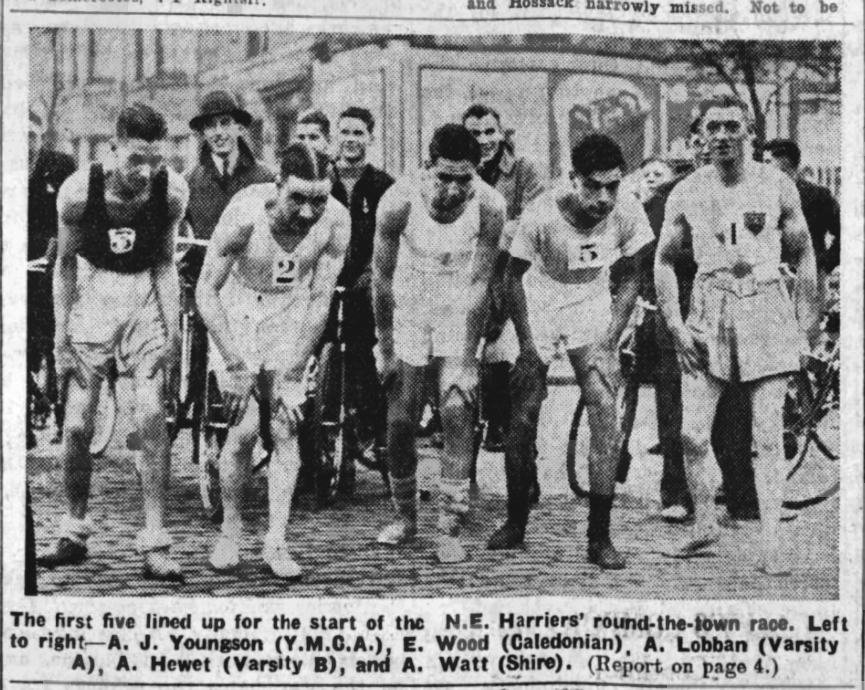
James Alexander Youngson, above left, who had run well on the track for Gordonians in 1933 and 1934, joined Aberdeen YMCA Harriers in early Winter 1934. On December 14th 1933, the Aberdeen Evening Express published a time-warp photo of three ‘Trail-layers’, each with a satchel under his left arm, dropping a trail of shredded paper for a NEHA cross-country course. (Colin knew of this system, but it had stopped by the mid-sixties, when he first ran cross-country. Did all the runners get lost if it was windy?)
It was announced in the EE in late October 1934 that “The Aberdeen Y.M.C.A. Harriers have now everything in apple pie order for the coming season. Although the active membership is 21, there are still a few vacancies for lads who wish to take up the harrier game.” Who could resist the call? Not Dad!
Then, Eureka! A report of the race in which Colin’s Dad won his NEHA medal! The P & J on Monday 19th November, 1934, described a race which happened on Saturday 17th. Below is a summary.
“DOUBLE HONOURS FOR Y.M.C.A.
In the North Eastern Harriers Junior 3 miles 6-man team championship, held at the Links, Aberdeen Y.M.C.A. Harriers achieved individual and team victories.” There follows an account of the first two miles, led by various nonentities. Then! “In the last mile, the favourite, James A.Youngson, went to the front but could not shake off the Milne twins, who were running in a loose and easy style. These three club-mates had a desperate fight, until the final sprint. Alex Milne won by inches from James A. Youngson, with George Milne a yard behind.
1 Alex Milne YM 16.45 and one fifth of a second; 2 James A. Youngson YM; 3 George Milne YM.
Team placing: 1 YMCA (1, 2, 3, 7, 10, 11 = 34 points’; 2 Aberdeenshire Harriers; 3 Aberdeen University”
The EE on the following Saturday 24th November 1934 comments further, in a weekly column by “Roadside” who deals with cycling, running, race walking and track athletics.
“PROMISING ‘Y.M.’ RUNNERS
Last Saturday’s three-mile junior team race at the Links resulted in another YMCA triumph. Alex Milne, James A. Youngson, and George Milne filled the first three places and the club also won the team event by a comfortable margin.
The ‘Y.M.’ also had the first three men in the two-mile novice championships at Pittodrie Park in October. This would seem to indicate that they have, at present, the best set of youngsters in the city.
To get back to the three-mile junior race. The event was held under ideal conditions and, although the time does not stand comparison with former years, it must be kept in mind that formerly the course was shorter. The lap has now been carefully measured, and it is 854 yards which gives a course of six laps plus 156 yards. The previous course never exceeded 5 and three-quarters laps. The running of the race on the left-hand turn, and the shifting of the finishing line was, I think, quite a successful innovation.
In December 1934, Jim was mentioned in the EE as liable to figure prominently in the forthcoming YMCA Harriers 5 mile club championship over the Torry course. This was “likely to result in a duel between James Youngson, James Thow and the twin brothers – Alex and George Milne”. The route was from the foot of Menzies Road, past Craiginches to the top of Nigg Brae, where the runners took the turning that led to Bridge of Dee, before crossing the bridge and racing down Riverside Road, to finish near Victoria Bridge. However, Jim did not take part. Arthur Lobban won, followed by Alex and George.
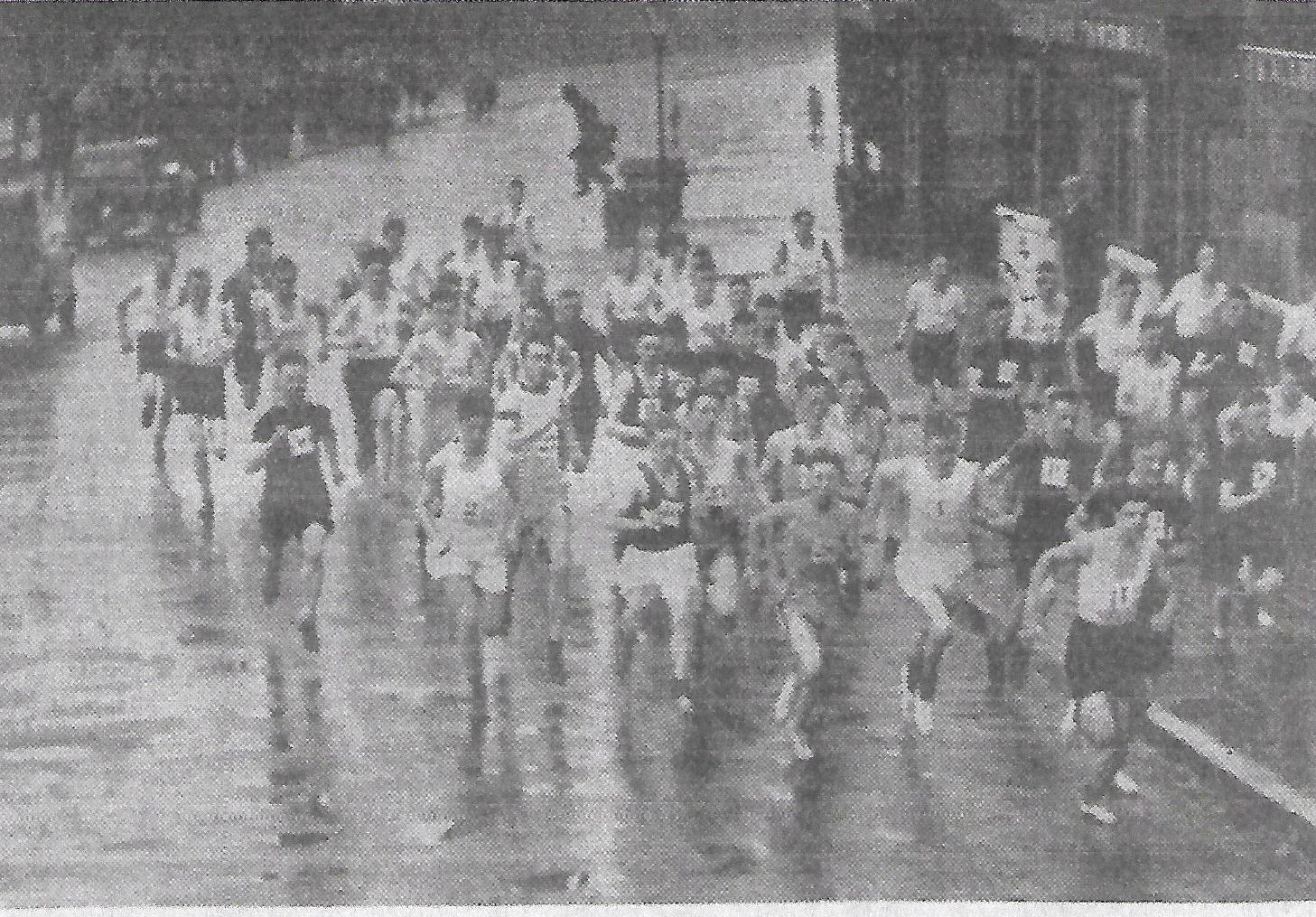
The start of the race for the Caledonian Cup, South Esplanade in February, 1935 (P&J Photo)
There is no mention of Colin’s Dad in early 1935, until the last race of the season, on Saturday 16th February 1935. The EE article states the following.
HARRIERS RACE FOR CALEDONIAN CUP
Six Teams to Compete in Stiff Test
The fifth annual three-mile race for the Caledonian Cup will be held under the auspices of the North Eastern Harriers Association, today at 3 p.m.
The competition is open to all amateur clubs within the area. Teams are of twelve runners each, of whom the first six men home count for places.
Teams are forward from: ‘Varsity, Shire, Aberdeen YMCA, Gordon Highlanders (2 teams) and Elgin YMCA Harriers.
The course is from South Esplanade West, past Craiginches to Harpers’ Works, striking off to the left to take the fields over to the road leading under the railway. Runners then take the country again to come on to the road at the railway cabin, and thence back to the finishing point in South Esplanade West.
Stripping accommodation is at the Dee Swimming Clubhouse, near Victoria Bridge, but ‘Varsity and ‘Shire will strip in the ‘Shire hut at Suspension Bridge.
Trail layers are asked to report at Dee Hut, at 2.15 p.m.”
There follows a full list of entrants, oddly not including Lobban and the Milnes.
Next Monday’s P&J has the results!
Y.M.C.A. Man First Home in Harriers’ Event
“Varsity won the N.E. Harriers’ Association three-mile junior team championship which was decided over a course at Torry on Saturday afternoon.
A field of sixty runners took part. From the start, A.R. Hewitt and N.R. McLean (‘Varsity) forced a stiff pace, with J.A. Youngson (YMCA) five yards in the rear. Taking the country, McLean went to the front, with Hewitt and Youngson at his heels.
Midway over the country the three leaders were having a tousy duel, the Elgin team being well bunched together for the team award. Coming on to the road again, McLean was clinging to three-yard lead, from Youngson and Hewitt, with H. McDougall (‘Varsity), J. Riddell (Elgin) and W. Grant (‘Shire) ten yards behind.
In the last 200 yards Youngson came away with a terrific burst of speed to pass McLean and carry on to win his first individual honour by twenty yards in the good time of 16 minutes 35 and a fifth seconds.
An exciting duel took place between McLean and Grant for second place, the former just getting the verdict by inches at the tape.”
Well! Where did that sprinting power come from? Perhaps this was Jim Youngson’s greatest-ever victory. Presumably, having won a ‘Junior’ race, he would now be classed as a Senior athlete!
The following Saturday’s EE ‘Roadside’ column emphasises how well Elgin YM had done, to come second to Varsity in the team race. Then he writes “The individual winner was J.A. Youngson of Aberdeen Y.M.C.A., who returned the second-fastest time for a winner of this race. The cup and individual medals were presented to the successful competitors by Mr Alexander Silver.”
Evidence of Elgin YMCA Harriers Club’s rise to prominence came in their promotion of an amateur athletics meeting on Wednesday 19th June 1935. This was the first meeting held since the inauguration of the club, and took place at Boroughbriggs Park, Elgin (where Colin raced a North District cross-country league race at the age of 62 in 2010.) In the previous Saturday’s EE, ‘Roadside’ mentioned that “The ‘stars’ to appear in the one and two miles handicap races are W Fraser (AU), L Davidson (‘Shire) and J.A. Youngson (Y.M.C.A.).” Then the P&J on Thursday 20th reported that the Two miles race (handicap) was won by local runner J. Riddell in 9 mins 41 and three-fifths seconds, from J.A. Youngson (Aberdeen YM) and A. Murray (Elgin).
In November 1935, Dad was selected to compete in a legendary Aberdeen team race. Alex Wilson supplied the following report in ‘The Scotsman’:
“ROUND THE TOWN RELAY RACE AT ABERDEEN
The North-Eastern Harriers’ Association held their 20-mile Round-The-Town Relay race at Aberdeen on Saturday 30th November 1935. Five teams of six-a-side participated in the event, which was won by Aberdeenshire in the excellent time of 1 hour 44 mins 17 secs.
Lobban (University ‘A’) led J. Youngson (Y.M.C.A.) by ten yards at the first lap, covering the distance in 12 mins, 12 secs. In the second lap, D. Annand (University) and A. Milne (Y.M.C.A.) ran abreast until 100 yards from the finish, when Annand pulled away to lead by 10 yards at the take-over. In the third lap, G. Milne (Y.M.C.A.) finished 100 yards ahead of L. Murray (Aberdeenshire); and in the fourth, fifth, and final stages C. McPherson, W. Grant and F. Yeoman, of the Aberdeenshire team, secured the lead respectively. Results were:
1 Aberdeenshire Harriers; 2 ‘Y.M.C.A.’; 3 University ‘A’; 4 University ‘B’; 5 Caledonian Harriers.”
Long-serving Aberdeen AAC Secretary, Hunter Watson, supplied more information. Dad would have worn a royal blue vest with a red and yellow triangular badge.
The P&J listed all the numbers of all the competitors in the five participating teams; and stated that the Shire Harriers had a winning margin over Dad’s team of only a hundred yards, with the University a further 400 yards behind. In addition there is a blurred picture of the five first lap runners, who were (left to right): “A.J. Youngson (initials wrong way round) (Y.M.C.A.); E. Wood (Caledonian); A. Lobban (Varsity A; A. Hewet (Varsity B); and A. Watt (Shire)”. Colin’s Dad is indeed wearing a dark vest with triangular badge and white shorts and white shoes, and looks very young (22), with short dark hair and skinny legs. What a pity the microfilm spoiled the clarity of the photo.
The man who outsprinted Dad – ‘G. Lobban’ of the University, does not exist in the programme. This refers to A.W.C. Lobban, who was listed as Varsity B but must have run for the A team. There is also an A. Lobban (Arthur, later the club secretary) in the YMCA team. I assume these were two different athletes (both good runners).
1935 was the very first ‘Round-The-Town Relay Race’. Six stages made up a total of around 19 miles. The First lap (2 and a half miles) started at the end of University Road, and went along King Street, up School Road and St Machar Drive to Great Northern Road and along to the end of Anderson Drive to the first take-over. (Dad must have been okay on uphills.) His 1935 time for the First lap was faster than the stage winners in 1936, 1937 and 1938. YMCA won the last two events. The Relay will have stopped after that, due to the start of the Second World War.)
Second lap (4 miles) – over Anderson Drive to the Bridge of Dee. Third lap (3 and a half miles) – Over Bridge of Dee and Abbotswell Road to Balnagask Road, out to the terminus at the end of Victoria Road, and in to the end of Menzies Road. Fourth lap (5 miles) – Out Menzies Road to Kirk o’ Nigg, down Abbotswell Road and over Bridge of Dee to Victoria Bridge. Fifth lap (1 and three-quarters miles) – Along the Quay to the end of Market Street and down to the end of Church Street, thence to the Promenade and to ‘the Dance Hall’. Sixth lap (2 and three-quarters miles) – Along the Promenade to the Bridge of Don and in King Street to the end of University Road, where the race finished.
The Journal for 23rd December, 1935 had the following report of what must have been the hardest fought club championships anywhere in the country:
Unique Event In Aberdeen Five Miles Race. YMCA Championship Event. For the first time in the history of amateur athletics in the north of Scotland twin brothers – Alex and George Milne of Aberdeen YMCA Harriers – finished in a dead heat in a club championship event. This unique performance was accomplished in the YMCA’s five miles road championship which was decided on Saturday afternoon.
From start to finish the twins engaged in a grim struggle that ultimately ended in a dead heat. Although their time was over a minute outside the course record, consideration must be given to the treacherous ice bound road that prevailed on Saturday. One of the competitors who competed, RGG Milne, sustained nasty cuts to the hands and shulders when he slipped heavily on the road coming down to the Bridge of Don. Another feature of the race was the welcome return to form of KA Gray who finished 40 yards behind the brothers Milne. Result:- 1. Alex and George Milne; 2. KA Gray; 3. A Lobban.”
And so ended 1935.
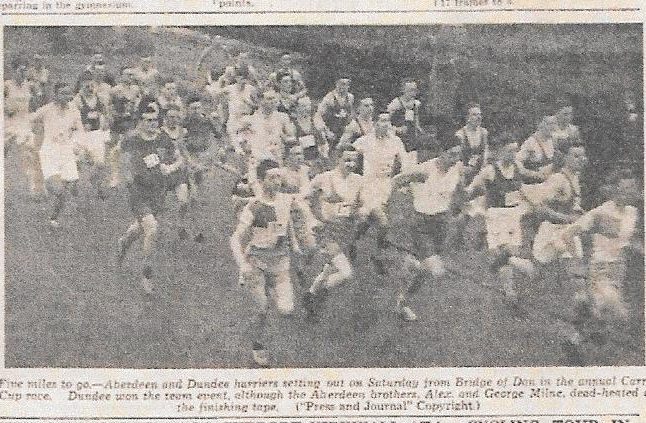
Monday, 30th January was the date on the P&J when the above photograph was published: the YM’s Milne twins again dead heating for first place. Two weks later in the East District Championships (11th February) there was no team from the club competing – probably because the venue was Hawick in the Borders. In a race won by the talented GM Carstairs, the first YM runners were G Milne in fourth and A Milne in seventh. By 1939 the YM was sending runners to the National championships – or the Milne brothers were travelling on their own initiative. The Journal of 6th March 1939 reported that the twins disappointed when they finished 15th (A) and 18th (G). During the summer of 1939 they continued to train and race as usual – on 11th May in the mile team race, the twins led the field up to the last hundred yards when Lobban and A Milen forged ahead and won in a dead heat with the other twin third, af ew yards back. Time? 4 min 40 5-10th sec – the fastest since 1936. Although they carried on over the summer, there was more and more news of the impending hostilities with the Kaiser and the Reich appearing in the headlines and throughout the papers.
The YMCA Harriers best years were probably the 1930’s and they continued their activities right up to the start of the War in 1939. We could find no trace of them in the Press and Journal or Evening News in either 1946 or 1947 so we assume that the Harriers aspect of the YMCA ceased with the start of the War – or maybe during it. The club was undoubtedly part of the wider YMCA movement given the strength of the Association in Aberdeen at the time – and since – and gained from it. We attach some sample Press Notes from the P&J for 1913 to show the strength of the club before the War and the types of activity indulged in then, as well as similar notes for similar reasons for 1935.
Aberdeen YMCA: 1913 Aberdeen YMCA 1935
